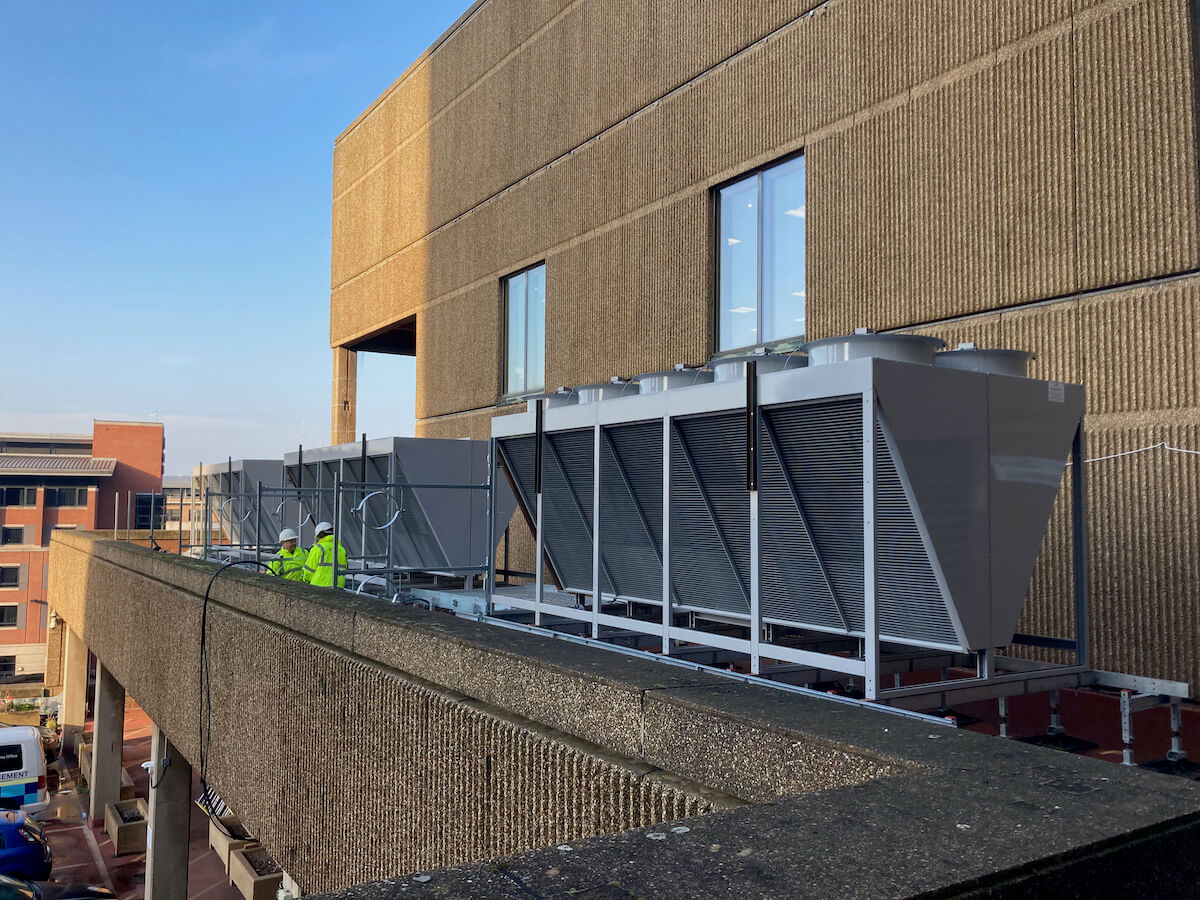
Client: Trinistar Investments
Site: The Capital Building, Liverpool
Value: £7.5m
Project: HVAC Replacement across 13 floors
Project Manager: Scott Bennett
The Capital Building, sometimes known as New Hall Place, is a 13 storey building in the Commercial District in Liverpool. Because of its sandy-coloured exterior and waterfront location, it became known locally, as the Sand Castle. Originally built in 1974 for Royal Insurance, it incorporates a section of the original ‘walkways in the sky’ project that began with the Shankland Plan for Liverpool city centre in 1965 and ended slightly ignominiously when the last sections were closed off or removed in 1995.
The building was always well ahead of its time, in the way it used water sourced heat pumps. The system is fed with the three thousand gallons of water per hour that seeps into the Mersey Railway Tunnel from the river above. This water, which enters at a year-round, constant 13 degrees centigrade is then used to either heat the building, or as a heat sink to cool the building.
The project was for a four-year phased Cat A refurbishment and fit out of what is the largest Grade A office building in Liverpool housing HM Government’s Home Office and Royal Sun Alliance.
The project is broken up into three main parts.
Firstly to create a temporary heating and cooling system for the building, so the aged pipework can be replaced.
When this is completed, we will strip out and replace all of that pipework from the top floor right through to sub-basement level
Then it’ll be time to install the new system and to remove the temporary solution.
These three phases are expected to take around four years to complete.
It began with the replacement and upgrading of the cooling system and original water source heat pump installation across all 10 floors followed by mechanical and electrical Cat A fit out.
The project involved working with restrictions of a secure site due to Home Office client and all staff needing to be security clearance and counter terrorism checked
The first job was to install the temporary dry air coolers. These were installed on the Fazakerley Way walkway and feed into the plant room on the sub-basement level of the building. We used pre-insulated Cool Fit Pipework, which is a relatively lightweight solution, has superb thermal properties and allows for quick installation/removal.
The project faces a number of key challenges:
We’re working on a live site which is home to the UK Border Agency and Royal Sun Alliance, so security, whilst keeping the offices functioning as normal, is critical.
Access is difficult – We’re working across multiple levels, outdoor roof spaces and sub-basement plant rooms.
The size of the pipework is significant as it is designed to feed an entire 13 storey building.
We must cause minimal disruption so we’re working out of hours where required, to allow the building users continuity of access. In this recent project, we froze a huge section of pipe to be able to complete the next stage of upgrade.
Scott Bennett is managing the project for Kimpton
“The Capital Building is an iconic building on the waterfront of the City and was ahead of its time in terms of the HVAC system that was created for it. Much of it was however approaching 50 years old, so very much at the end of its reliable life span.
Our project is to deliver a system that will keep the building looking and functioning perfectly for the next phase of its life. It’s a huge project, but for us to be working on yet another of the City’s most important buildings a real feather in our caps.”

If you would like to discuss any of our services, please call 0151 343 1963 or complete the form below and we will be in touch shortly.